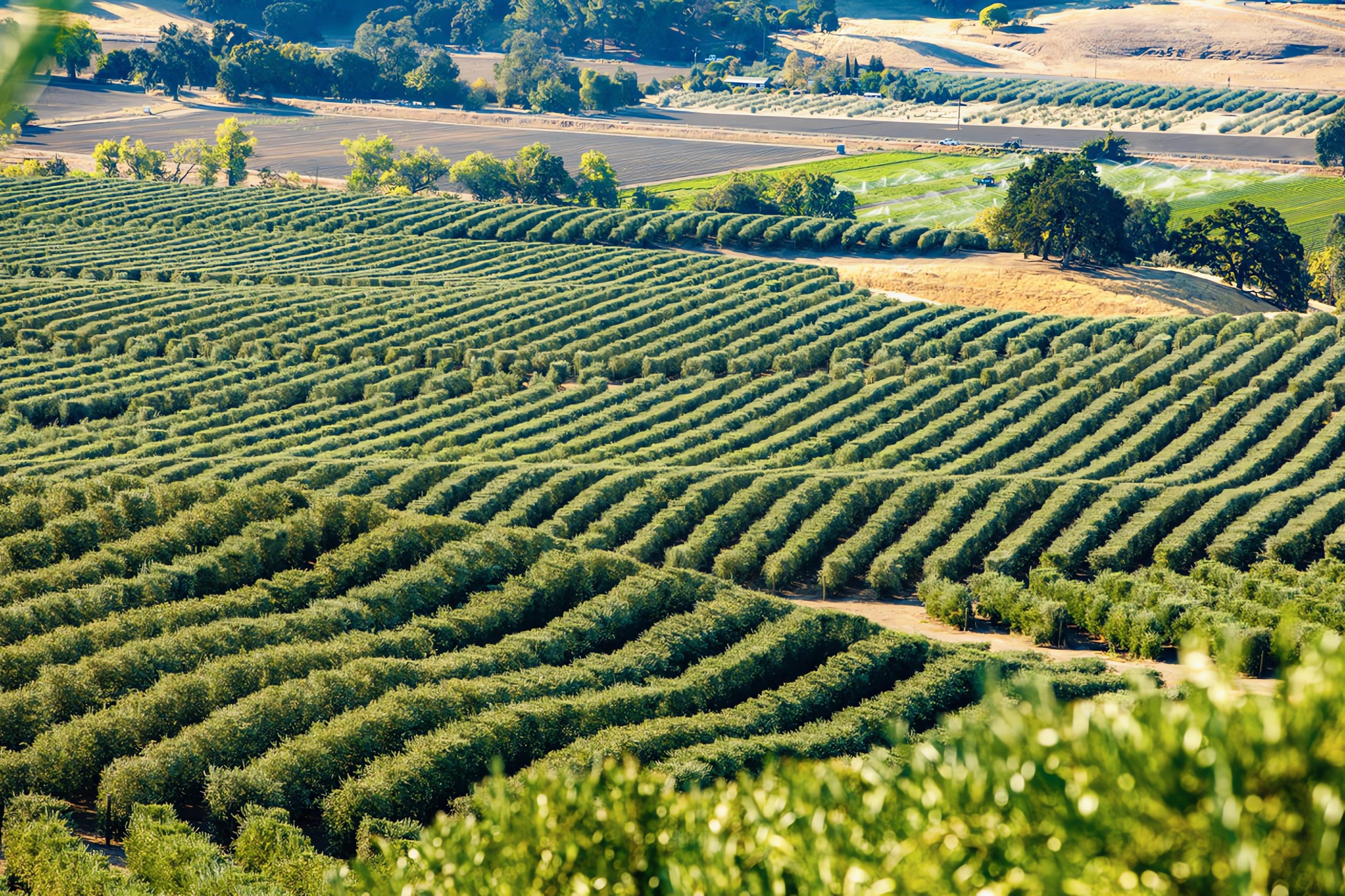Séka Hills: Olive Oil from the Yocha Dehe Wintun Nation
Olive trees photo credit Seka Hills
For 15,000 years, members of the Yocha Dehe Wintun Nation have been the historical inhabitants of the Capay Valley in Northern California, a fertile stretch of land about 45 miles west of Sacramento. They have always enjoyed a close relationship with their land, where besides hunting and fishing, they also gathered acorns, clover, wild oats, manzanita berries, and other native plants. After deplorable chapters in the 19th and early 20th centuries, when Tribe members were removed from their lands, enslaved in missions, and then forced to live on barren, non-arable land, they have rebounded triumphantly. In part, this can be attributed to their forward-thinking commitment to sustainable land practices and their decision to focus on olives, as a crop that was well-suited to the hot summers and limited rainfall of their homeland. They are the only known Indigenous Tribe to currently grow, mill, and produce extra virgin olive oil for commercial sale under the brand name Séka Hills.
History of Séka Hills
Before they could enact this vision of a new way to make use of their ancestral lands, they took full advantage of the first Indian Gaming Regulatory Act in the 1980s by opening Cache Creek Indian Bingo, which later became The Cache Creek Casino Resort. These enterprises gave them the means to purchase their lands back and invest in education and other means to insure the stability of their people.
In a PBS program for Tending Nature, Marshall McKay, former Tribal Chairman, recounted the genesis of the enterprise, sharing that since his people had always been farmers, producing extra virgin olive oil was particularly intriguing. Today Séka Hills produces not only olive oil, but also wine, honey, nuts and more.
Jim Etters, with just harvested olives on the conveyer belt heading to the hopper. photo Seka Hills
Jim Etters has been the Tribe’s Director of Land Management since 2006. According to Etters, the Tribe was looking for a crop that was suited to the climate and particular soil on their lands, which would also conserve water use. The Tribe began planting olives in 2008.
Tribal members were lucky that the University of California Davis campus, only 25 miles away, has a world-renowned Olive Center and is involved with the latest research and education in this field. They conferred with the educators and scientists at the Olive Center and took classes in olive growing, sensory evaluation, and milling of olives for oil. To ensure the best purity and taste of their olive oil they invested in a mill, instead of having to truck the fruit to a mill located hours away. Their Italian Alfa Laval mill was built so close to their olive groves that sometimes their olives can be processed within 10 minutes of coming off the tree.
Olive Oil Production Today
Super high density orchard producing arrbosana, aArbequina and coratina olives. photo credit Seka Hills
The Tribe strives to be a good neighbor to the other farmers in the valley and makes their mill available for neighboring farmers, big or small, to do their own custom crushes.
Their olive trees are planted close together so that they can be harvested mechanically. Three of their seven orchards are SHD (super high density) hedgerows which also allow for mechanical pruning of the compact plants.
Séka Hills olives are only milled for 45 days out of the year. The Capay Valley features a rainy season and long dry season, when temperatures can reach 110 degrees, a heat that can intensify the flavors, according to Etters. They also use irrigation for additional water.
4 bottles Seka Hills photo credit Anna Mindess
Five different varieties of olives are grown, and each oil has a different flavor and pungency. Estate arbequina, their signature product, was first released in 2012 and has won numerous awards and accolades. It is widely available at specialty retailers and often used by chefs, while the other varieties, coratina, picual, frantoio and taggiasca, are only available for purchase online or at their tasting rooms.
Their prized Séka Hills Olio Nuovo, made from arbequina olives, has a bright green color and a spicy, fresh flavor often described as grassy. Because it is very fresh and not filtered or allowed to settle, the color and taste evolve daily. A limited amount is generally released in November and is only available for a few months. It can be purchased at select specialty food stores.
They also produce Capay Valley Extra Virgin Olive Oil, which is only for food service and not available for retail sales. Chefs often call this their workhorse EVOO.
Why Séka Hills?
Olive oil on bruschetta photo by Judy Doherty
The Tribe named their products Séka Hills after the blue hills that overlook their lands, because in their Native Patwin language, séka means blue. They are dedicated stewards of the land and sustainably manage more than 25,000 acres, farming more than a dozen crops, partnering with organic growers, plus, they graze a herd of 800 cattle on their Tribal rangeland.
“What makes Seka Hills different,” says Etters, “is that we are 100% estate grown and have complete control from the time the small tree is planted to the first harvest. Also, the Tribe’s connection to the land. The land is what has cared for them for thousands of years. And they take their culture and sustainability into every decision they make on the farm and ranch.”
A visit to their Capay Valley Tasting Room offers not only scenic views of the valley and a peek at their giant olive mill, but also a chance to have lunch at the deli and taste their many products. A second tasting room in Midtown Sacramento is slated to open in the spring of 2024.





